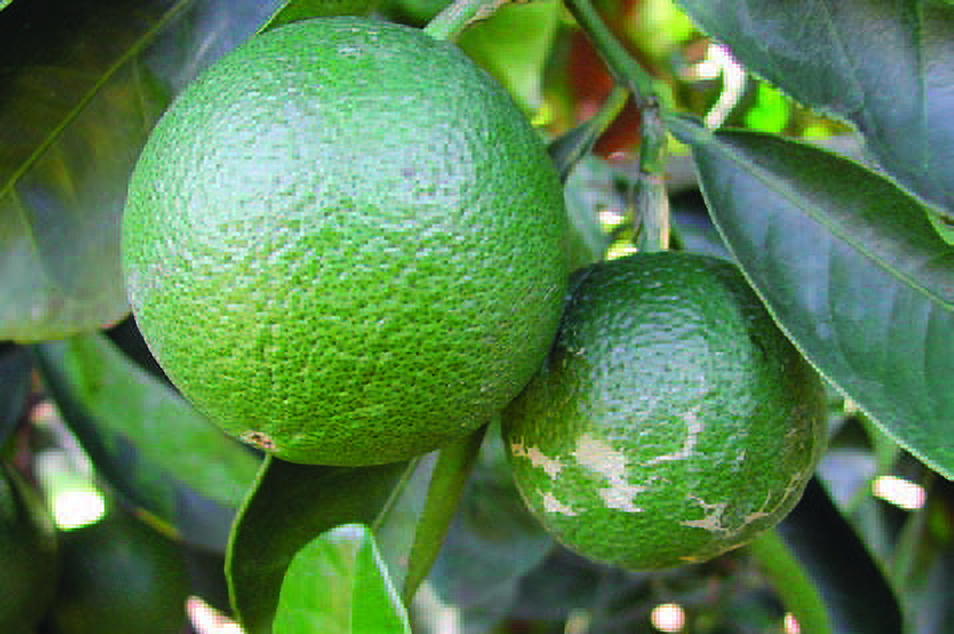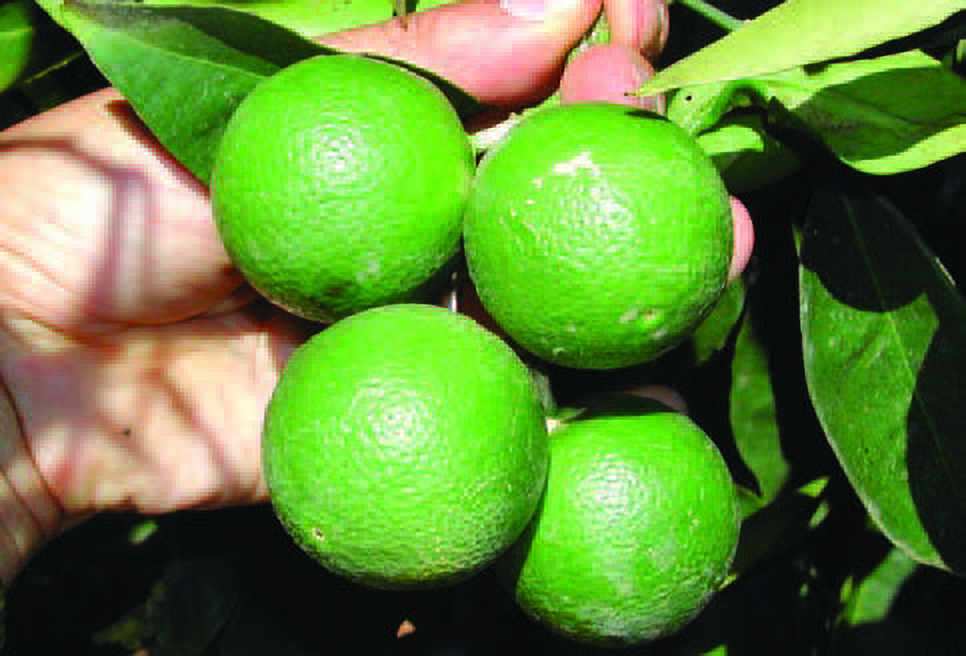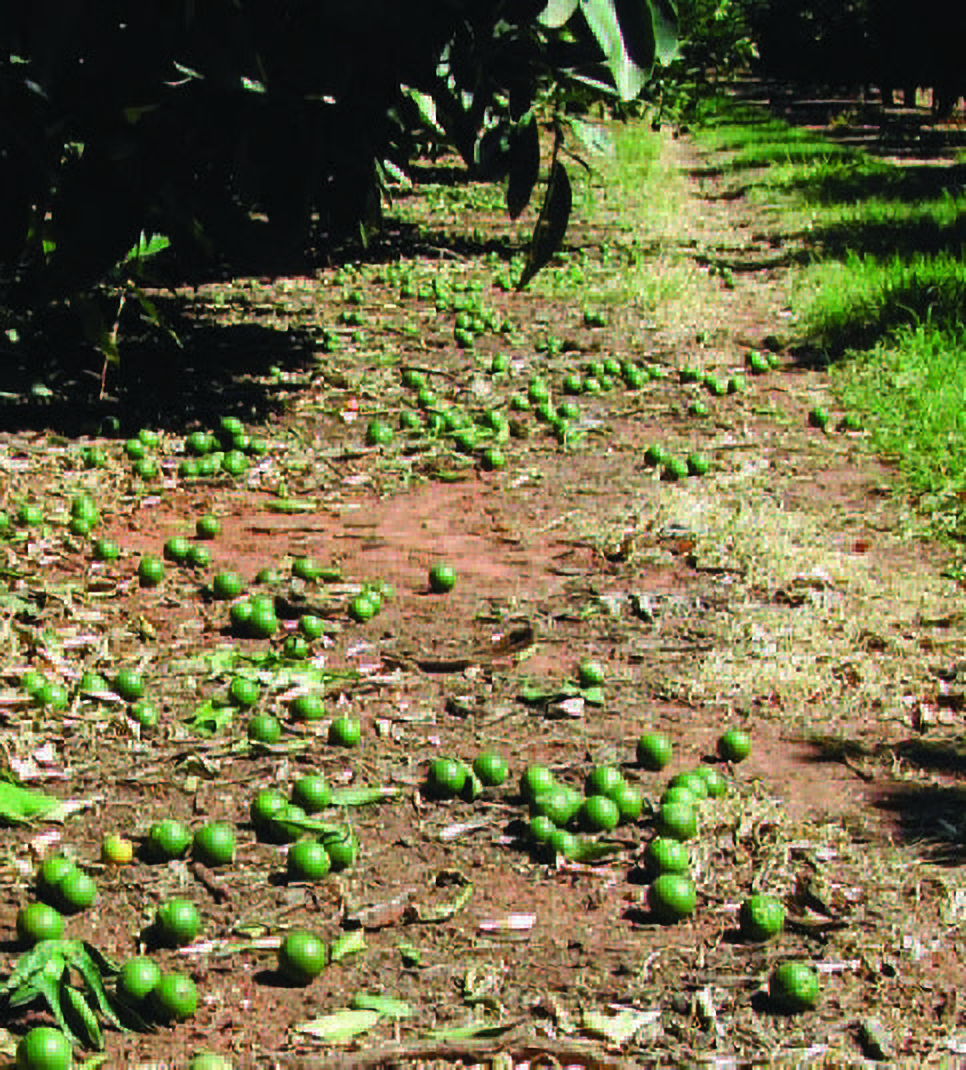
Hand thinning citrus
Summary
Hand thinning is manually removing fruit, It is one management tool to reduce crop load to increase fruit size before harvest. It is the most precise and least risky method of thinning, but very labour intensive. For hand thinning to be economically viable, significant increases in market returns would have to be achieved to offset the costs. Higher value varieties, such as mandarins, are often able to achieve economic gain from hand thinning. Some growers have also reported economic gain from hand thinning navels, especially for the export market. Some growers hand thin to reduce picking and packing costs. Fruit that is significantly small at the end of the Stage I fruit growth period (cell division) will probably mature as small, undersized fruit. For some growers, especially those who pack their fruit, it is more economical to pay somebody to pull the small fruit off the tree than to incur the added costs of picking and putting this small fruit through the packing line. Thinning thresholds will vary for different varieties, growing districts, tree age and condition.
Trials
Trials conducted in Sunraysia in 2001 on Washington navel trees carrying a heavy crop, showed that hand thinning increased net returns by 20–40%. Frame counts on these trees before hand thinning varied from 9 to 11 fruit per frame (50 cm square quadrat). Hand thinning trials on trees carrying a light to average crop have not produced positive economic returns. The actual number of good-sized fruit that trees can carry is dependent on many factors such as tree age, amount of fruit-bearing wood, tree health, variety and rootstock. Current recommendations suggest that Washington navels should be thinned if frame counts are more than 6–10 fruit during early to mid summer. Imperial mandarins should be thinned if frame counts are more than 8–10 fruit (southern NSW, Vic and SA) or 10–15 fruit in Qld.
Timing
Hand thinning is normally done after natural fruit drop has finished at the beginning of the Stage II fruit growth period (cell expansion). Thinning as early as possible will have the most effect on fruit size. Thinning slightly later makes small and scarred fruit more obvious and subsequently removed. Hand thinning normally commences in late December to early January when fruit size is about 30–40 mm in diameter. Fruit smaller than 30 mm are more difficult to locate in the canopy.
Crop density levels
The appropriate crop load is dependent on variety and growing district. Other factors that need to be considered are tree health and age, cultural practices and the pruning program. Good healthy trees will be able to carry more large fruit than older weaker trees.
When spacing fruit within a canopy, the amount of crop load that a branch can support should be considered. Leave fruit that are located on strong vigorous branches. Fruit should also be evenly spaced along the branch.
If Washington navel fruit is < 40 mm in early January or < 50 mm in early February, then fruit will most likely be < 75 mm at harvest. As a general guide for southern Australian growing districts, navel oranges can be thinned to 3–5 per counting frame, Imperial mandarins to 8–10 per frame and Murcott mandarins to 3–4 per frame.
Murcott mandarins are sometimes thinned up to three times. The first thin is undertaken when fruit are about 25–35 mm in diameter by removing small and blemished fruit and reducing crop load by up to 50%. The second thin is undertaken 4–6 weeks later to remove any blemished or sunburnt fruit. A third thinning may be warranted if the desired crop load has not yet been achieved.
A counting frame (0.125 m³ quadrat) can help staff to develop an ‘eye’ for the required crop density. It can be used regularly when first commencing hand thinning and then used occasionally once a good thinning technique is achieved. Information on using a counting frame is outlined in Primefact 787, Assessing citrus crop load.
Hand thinning methods
The key to effective hand thinning is removing small fruit that will not be of any market value.
Remove all small, scarred, blemished or deformed fruit (Figure 1). A good visual guide is to remove about 20–30% of fruitlets. Pay close attention to the bottom of trees as a higher percentage of small fruit is located there.
A key technique for hand thinning is to not look down. Often growers become shocked by the amount of fruit on the ground and consequently do not thin their trees sufficiently (Figure 2).
Examine bunches of fruit. Do not thin out doubles or triples just because ‘they are there’ (Figure 3). Sometimes doubles or triples can still grow into large fruit.
Assess the carrying capacity of the branch and the numbers of surrounding fruit. If the double or triples are all large and are not surrounded by many other fruit, then the bunch might not need to be thinned. For varieties susceptible to sunburn (e.g. Murcott mandarins), remove any exposed fruit, especially on the tops of trees.



References
Bevington K and Khurshid T (2002) Optimisation of citrus production and fruit size: an interactive management model, Horticulture Australia Limited, final report for project CT98023.
Bevington K, Hardy S, Meville P, Thiel K Fullelove G and Morrish P (2003) Fruit size management guide, part 1, an Australian Citrus Growers publication.
Bevington K, Hardy S, Falivene S, Khurshid T, Fullelove G and Morrish P (2003) Fruit size management guide, part 2, an Australian Citrus Growers Publication.

